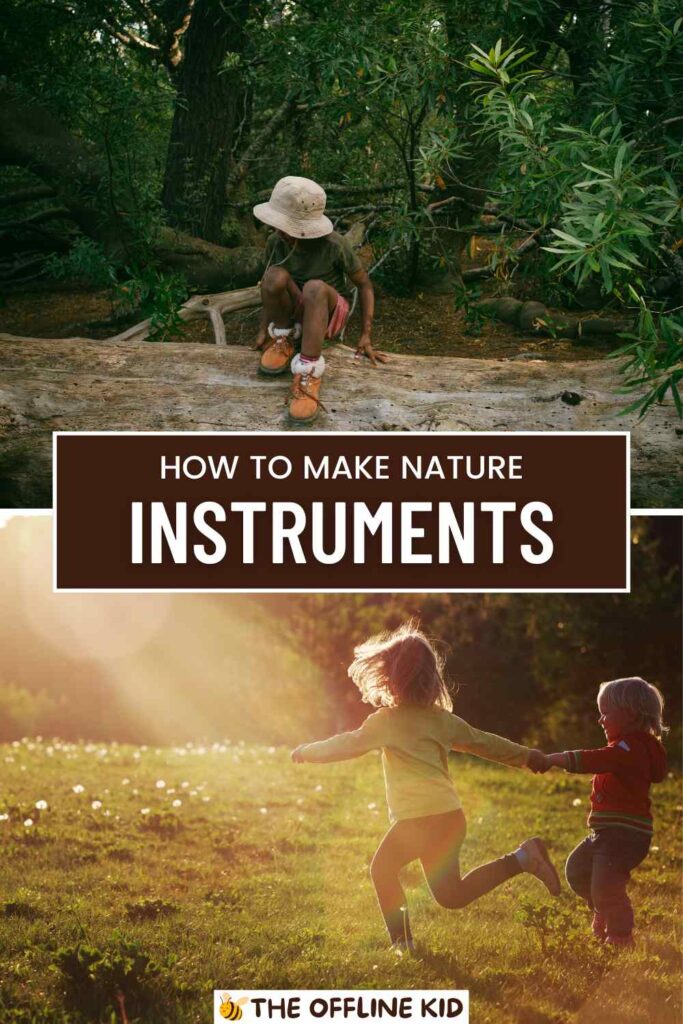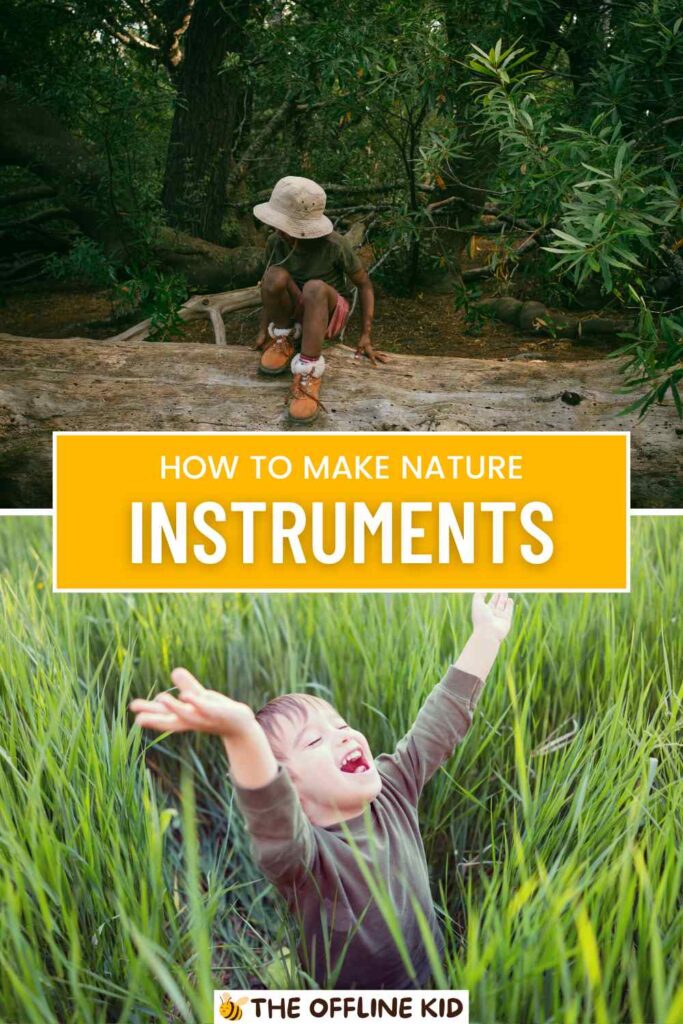Discover the joy of creating music with nature!
This guide will teach kids how to make fun and unique instruments using natural materials, sparking creativity and a love for the outdoors.
Getting Started
Choosing the Right Location
To begin your adventure in making instruments from nature, it’s essential to find the perfect location. Look for areas that are:
- Safe and Accessible: Ensure the place is safe for kids to explore, free from hazardous plants or terrain.
- Rich in Natural Resources: Choose a location with an abundance of natural materials like leaves, sticks, stones, and more.
Essential Tools and Materials
Before you head out, gather some basic tools and materials to help with your crafting:
- Collecting Bags: Reusable bags or baskets for gathering materials.
- Scissors and Pruners: For cutting leaves, grass, and small branches.
- Twine and String: Useful for binding and securing materials together.
- Glue and Tape: For attaching different parts of your instruments.
- Decorative Items: Natural paints, dyes, or markers to personalize your creations.
Basic Principles of Sound and Music
Understanding the basics of sound and music can enhance the instrument-making experience:
- How Sound is Produced: Explain how different materials can create sound through vibration.
- Types of Sounds: Explore the variety of sounds produced by natural objects (e.g., rustling leaves, tapping stones).
- Experimenting with Pitch and Volume: Teach kids how the size, shape, and material of an object can change the sound it makes.
Nature Walk: Collecting Materials
Start with a fun nature walk to collect materials for your instruments. Encourage kids to:
- Observe and Listen: Pay attention to the sounds around them and think about how they can replicate those sounds with natural objects.
- Be Respectful: Collect only what is needed and avoid damaging plants or habitats.
- Get Creative: Look for unusual or unique items that could be used to create interesting sounds.
With these basics covered, you’re ready to dive into the exciting world of making musical instruments from nature. Let the creativity and exploration begin!
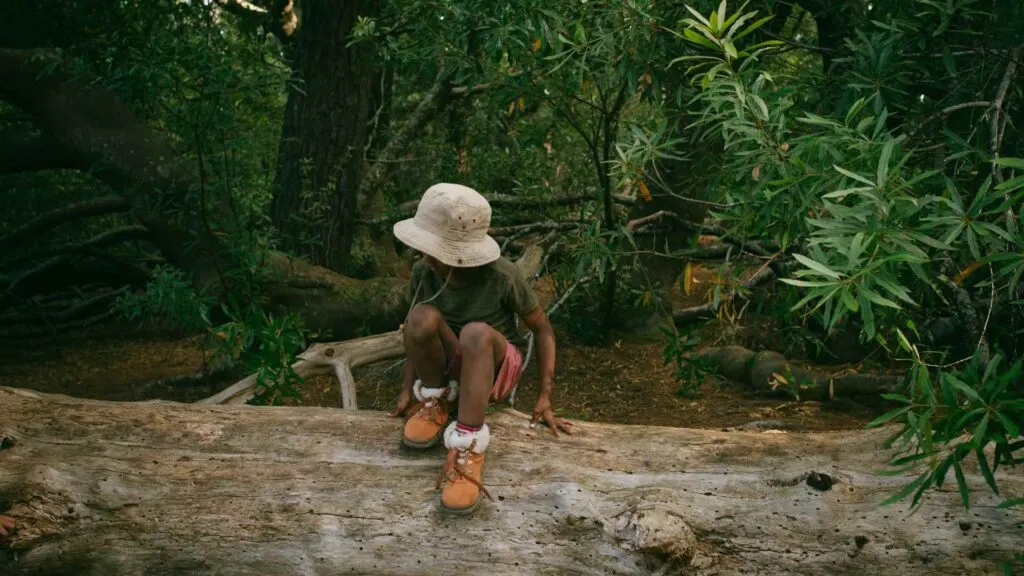
Simple Instruments for Young Kids
Leaf Whistles
Leaf whistles are a fun and easy way to start making music with nature.
How to Find the Right Leaves
- Look for Wide Leaves: Broad, flexible leaves work best for whistles.
- Test for Strength: Ensure the leaves are not too dry or brittle, as they might tear easily.
Step-by-Step Instructions
- Select a Leaf: Choose a broad leaf without tears or holes.
- Fold the Leaf: Fold the leaf in half lengthwise.
- Blow Across the Folded Edge: Hold the leaf tight and blow across the folded edge. Experiment with different blowing techniques to create various sounds.
Stone Castanets
Stone castanets are perfect for creating rhythms and beats.
Selecting Smooth, Flat Stones
- Find Flat Stones: Look for small, flat stones that fit comfortably in your hand.
- Check for Smoothness: Smooth stones work best and are more comfortable to hold and clap together.
Creating Rhythms and Beats
- Hold a Stone in Each Hand: Place the stones between your thumb and fingers.
- Clap the Stones Together: Clap the stones to create a clicking sound. Try different rhythms and patterns to make your music.
Stick Clappers
Stick clappers are simple yet effective instruments for creating percussive sounds.
Finding the Perfect Sticks
- Choose Straight Sticks: Look for sticks that are straight and roughly the same length.
- Test for Sturdiness: Ensure the sticks are strong and won’t break easily when clapped together.
Decorating and Personalizing
- Clean the Sticks: Remove any dirt or loose bark.
- Decorate: Use natural paints, markers, or wrap them with colorful string to make them unique.
- Clap Together: Hold a stick in each hand and clap them together to create different rhythms.
Combining Simple Instruments
Once the kids have made their simple instruments, encourage them to play together and form a mini band. Here are some ideas:
- Rhythm Games: Play follow-the-leader with rhythms and beats.
- Sound Stories: Create stories using the sounds of the instruments, like the rustling of leaves or the clapping of sticks.
- Music Time: Set aside a specific time for the kids to explore and play their instruments, encouraging creativity and improvisation.
These simple instruments are a great way for young kids to start exploring the world of natural music-making. They are easy to make, fun to play with, and a fantastic introduction to the basics of sound and rhythm.
Intermediate Instruments for Older Kids
Pine Cone Shakers
Pine cone shakers are excellent for creating rattling sounds and are easy to make.
Collecting and Preparing Pine Cones
- Find Mature Pine Cones: Look for open and dry pine cones.
- Clean the Pine Cones: Remove any dirt or debris.
Adding Seeds or Pebbles Inside
- Gather Small Items: Collect small seeds, pebbles, or beads.
- Fill the Pine Cone: Carefully place the items inside the gaps of the pine cone.
- Seal the Openings: Use a bit of natural glue or wax to keep the items inside.
Playing the Shakers
- Shake the pine cones to create a rattling sound. Experiment with different fillings for varied sounds.
Driftwood Xylophone
A driftwood xylophone is a fantastic way to explore melodies using natural materials.
Finding Driftwood Pieces of Different Lengths
- Collect Driftwood: Look for pieces of driftwood of varying lengths and thicknesses.
- Test for Sound: Tap the pieces to check the sound they produce.
Arranging and Securing on a Frame
- Create a Frame: Use sticks or branches to create a frame for the xylophone.
- Attach the Driftwood: Secure the driftwood pieces to the frame using twine or string, arranging them from shortest to longest to create a range of pitches.
- Play the Xylophone: Use a small stick to tap the driftwood pieces and create melodies.
Acorn Cap Whistles
Acorn cap whistles are small but powerful instruments that are easy to make and fun to play.
Selecting and Cleaning Acorn Caps
- Choose Large Acorn Caps: Look for acorn caps that are large and intact.
- Clean the Caps: Remove any dirt or debris from the inside.
Techniques for Making Whistle Sounds
- Hold the Acorn Cap: Hold the acorn cap between your thumb and index finger.
- Blow Across the Edge: Blow across the edge of the cap’s opening. Experiment with the angle and force of your blow to produce different sounds.
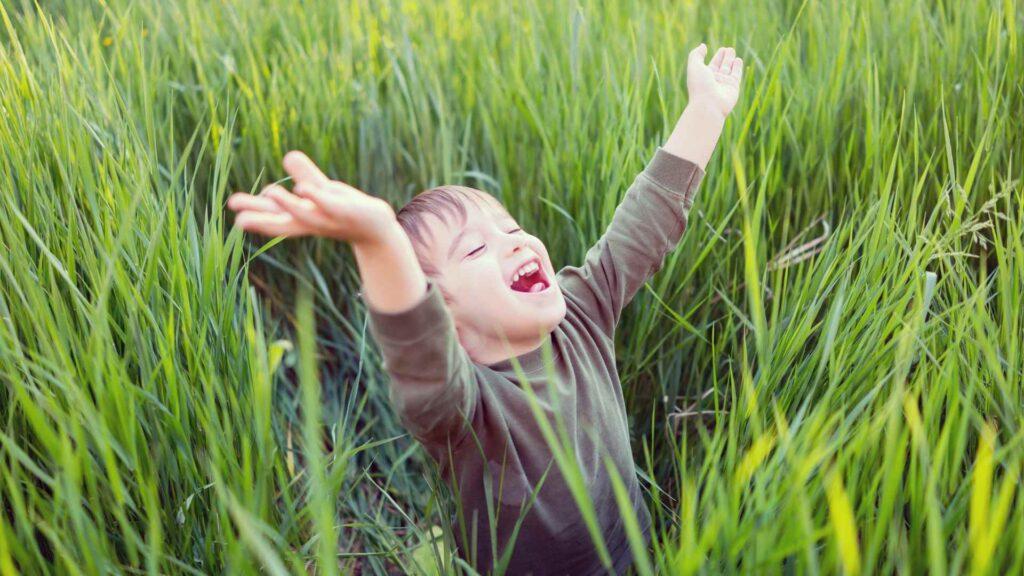
Combining Intermediate Instruments
Encourage older kids to combine their instruments to create more complex musical experiences.
Nature’s Orchestra
- Group Performances: Form small groups and assign different instruments to each child.
- Conducting: Teach basic conducting skills to lead the group in playing together.
- Composing: Encourage kids to compose simple songs using their instruments.
Recording and Sharing Your Music
- Simple Recording Techniques: Use a smartphone or a simple recording device to capture the sounds.
- Sharing: Share the recordings with family and friends, or upload them to social media to showcase the kids’ creativity.
These intermediate instruments are perfect for older kids who are ready for a bit more challenge. They provide a deeper understanding of sound and music, allowing kids to explore melodies and rhythms in a fun and engaging way.
Advanced Instruments for Creative Minds
Log Drum
A log drum is a fantastic instrument that produces deep, resonant sounds, perfect for older kids who enjoy hands-on projects.
Choosing the Right Log
- Find a Solid Log: Look for a log that is solid, dry, and free from cracks.
- Consider Size: The size of the log will affect the sound; larger logs produce deeper sounds.
Carving and Hollowing Techniques
- Mark the Drum Area: Draw lines on the log where you will carve out the slits.
- Carve the Slits: Use a chisel and hammer to carve slits into the log, creating keys of different lengths and widths.
- Hollow Out the Log: Carefully hollow out the inside of the log beneath the slits to enhance the sound.
- Smooth the Edges: Sand down the edges of the slits to prevent splinters and improve sound quality.
Playing the Log Drum
- Use wooden mallets to strike the keys. Experiment with different striking techniques to produce various rhythms and tones.
Shell Horns
Shell horns are unique instruments that create powerful, resonant sounds.
Finding Suitable Shells
- Look for Large Shells: Conch shells or other large, spiral shells work best.
- Ensure the Shell is Intact: Check for any cracks or holes.
Cleaning and Preparing for Sound
- Clean the Shell: Thoroughly clean the shell inside and out.
- Create a Mouthpiece: If necessary, carve a small hole at the pointed end of the shell to create a mouthpiece.
Playing the Shell Horn
- Hold the shell up to your lips and blow into the mouthpiece. Adjust your lip position and blowing technique to produce different sounds.
Grass Blade Harmonica
A grass blade harmonica is a simple yet effective instrument that uses natural materials to create musical sounds.
Selecting and Preparing Grass Blades
- Find Sturdy Grass Blades: Look for long, wide blades of grass that are sturdy and flexible.
- Clean the Blades: Remove any dirt or debris.
Mastering the Technique
- Hold the Grass Blade: Place a single blade of grass between your thumbs, stretched tight.
- Blow Through the Blade: Blow through the gap between your thumbs, causing the grass blade to vibrate and produce sound.
- Experiment with Blowing Techniques: Adjust the tension of the grass blade and the force of your breath to create different pitches and tones.
Combining Advanced Instruments
Encourage kids to combine their advanced instruments for a full musical experience.
Nature’s Symphony
- Form an Ensemble: Assign different instruments to each child to form a natural orchestra.
- Create Compositions: Encourage kids to compose their own pieces, exploring the range and capabilities of their instruments.
- Perform for an Audience: Organize a small concert for friends and family to showcase the kids’ musical creations.
Recording and Sharing Advanced Music
- Advanced Recording Techniques: Use a digital recorder or a smartphone with a good microphone to capture the rich sounds of the advanced instruments.
- Editing and Sharing: Edit the recordings using simple software and share them on social media or in a family newsletter.
These advanced instruments provide a deeper, more immersive experience in music-making, encouraging kids to use their creativity and technical skills. They offer a sense of accomplishment and pride in creating something complex and beautiful from nature.
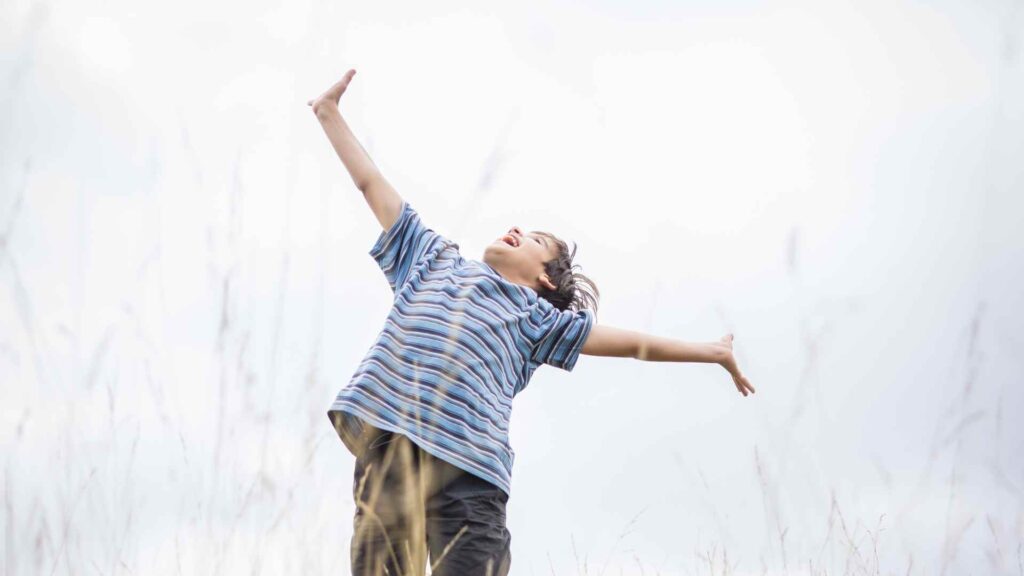
Combining Natural Instruments
Nature’s Orchestra
Bringing all the natural instruments together can create a fun and dynamic musical experience for kids. Here are some ideas for organizing and enjoying a nature-based orchestra:
Ideas for Group Activities and Performances
- Group Jamming Sessions: Set aside time for kids to come together and play their instruments in an informal jam session.
- Nature Concerts: Organize a small concert where kids can perform the songs they’ve composed using their natural instruments.
- Interactive Storytelling: Combine music and storytelling by creating sound effects and background music for a story using the natural instruments.
Conducting and Composing with Natural Instruments
- Basic Conducting Skills: Teach kids simple conducting techniques to lead the group in playing together, such as starting and stopping the music, changing the tempo, and coordinating different sections.
- Composing Simple Songs: Encourage kids to compose their own songs or rhythms. They can write down their compositions using simple notation or drawings to represent different sounds and rhythms.
Recording and Sharing Your Music
Simple Recording Techniques
- Using a Smartphone: Most smartphones have built-in recording capabilities. Find a quiet location and use the voice recorder app to capture the music.
- Digital Recorders: If available, use a digital recorder for higher sound quality. Place the recorder in the center of the group to capture all the instruments evenly.
Sharing on Social Media or with Friends and Family
- Creating a Music Video: Record a video of the kids playing their instruments and share it on social media platforms like YouTube or Facebook.
- Audio Recordings: Share audio recordings via messaging apps, email, or social media. Encourage kids to share their music with friends and family, fostering a sense of pride and accomplishment.
Seasonal and Thematic Instruments
Creating instruments that reflect the seasons or specific themes can add an extra layer of creativity and fun to the experience.
Spring and Summer Instruments
- Flower Shakers: Use dried flowers and seeds to create colorful shakers.
- Fresh Leaf Whistles: Use the fresh, flexible leaves of spring and summer for whistles.
Autumn Instruments
- Leaf Tambourines: Use dry, colorful leaves to create tambourines that rustle and crackle.
- Acorn Maracas: Fill small gourds or containers with acorns to make maracas.
Winter Instruments
- Ice Instruments: Create instruments from ice, like ice chimes or ice drums. Use different sizes and shapes of ice to produce various sounds.
- Snow Drums: Use packed snow to create drum surfaces. Experiment with different sticks to see what sounds they produce on the snow.
Nature-Inspired Crafts and Art Projects
Decorating Instruments with Natural Paints and Dyes
- Using Natural Materials for Paint: Create paints and dyes from natural materials like berries, leaves, and soil.
- Personalizing Instruments: Allow kids to decorate their instruments with these natural paints, making each instrument unique and special.
Creating Additional Nature Crafts
- Nature Collages: Use leftover materials from instrument making to create beautiful nature collages.
- Leaf Rubbings: Use leaves and crayons to create leaf rubbings, exploring the textures and patterns of different leaves.
By combining natural instruments and adding seasonal and thematic elements, kids can enjoy a rich and varied musical experience. This not only enhances their creativity and musical skills but also deepens their connection to nature throughout the year.
Educational Insights and Extensions
Learning Through Play
Making instruments from natural materials is a wonderful way for kids to learn while having fun. Here’s how you can incorporate educational elements into the activity:
Incorporating Lessons on Nature, Physics, and Music
- Nature Exploration: Discuss the different types of trees, plants, and materials found during your nature walk. Encourage kids to observe and identify various natural elements.
- Sound and Physics: Explain the basics of how sound is produced and how different materials and shapes affect sound. Discuss concepts like vibration, pitch, and volume.
- Musical Concepts: Introduce simple musical concepts such as rhythm, melody, and harmony. Show how different instruments can come together to create a complete musical piece.
Storytelling and Cultural Connections
Using natural instruments can also be a way to connect with different cultures and traditions:
Exploring Traditional Instruments from Different Cultures
- African Drums: Learn about the significance of drums in African cultures and try to replicate some of the rhythms using log drums or other natural percussion instruments.
- Native American Flutes: Discuss the use of flutes in Native American music and craft simple versions using natural materials.
- Asian Gongs and Bells: Explore the use of gongs and bells in Asian cultures and create similar sounds with stones or shells.
Creating Cultural Narratives
- Cultural Stories: Pair the instruments with stories from different cultures. For example, tell a Native American story while playing the flute or drum.
- Interactive Storytelling: Encourage kids to create their own stories and use their instruments to add sound effects and music, making the storytelling experience more immersive.
Crafts and Art Projects
Expand the creativity by integrating additional crafts and art projects related to nature and music:
Decorating Instruments with Natural Paints and Dyes
- Making Natural Paints: Show kids how to create natural paints from items like berries, leaves, and soil. This can be a fun science experiment as well.
- Personalizing Instruments: Let kids use the natural paints to decorate their instruments, adding a personal touch to their creations.
Nature-Inspired Crafts
- Nature Collages: Use leftover materials like leaves, sticks, and flowers to create beautiful nature collages. This helps kids see the artistic potential in everyday natural items.
- Leaf Rubbings and Prints: Use leaves and crayons or paints to create leaf rubbings and prints. This can be a great way to explore the textures and patterns of different leaves.
Conclusion
Encouraging kids to make instruments from natural materials not only sparks creativity and a love for music but also deepens their appreciation for the natural world.
By incorporating educational insights, cultural connections, and additional crafts, this activity becomes a rich, multifaceted learning experience.
So gather your materials, head outside, and let the music of nature inspire you!
